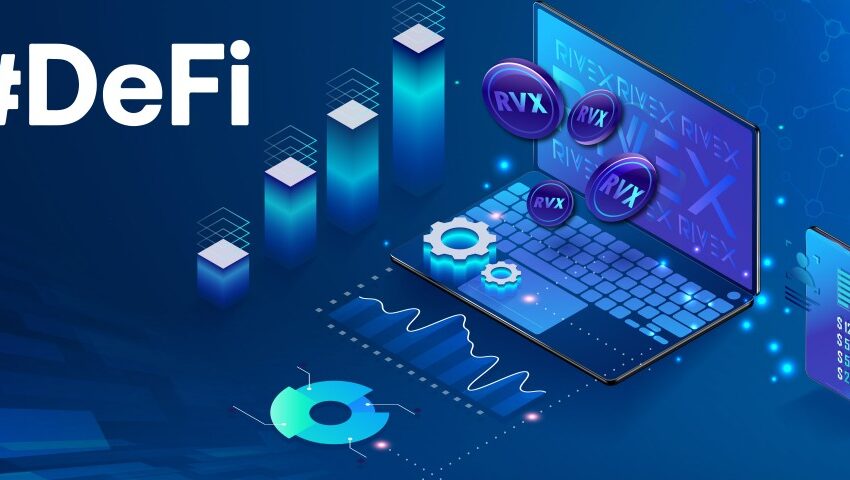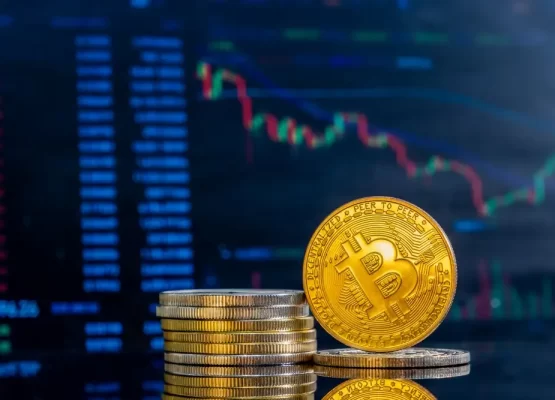In 2023, we will witness the appearance of ideas that would ordinarily require years of development because the progression of technology has changed the world. Even while the epidemic affected our day-to-day lives, it was a driving force for advancing innovation and technology. The pandemic catalyzed technological innovation, one example being the digital currency trade.
Bitcoin, Ripple‘s XRP, Ethereum, Stable Coin, and various other digital currencies are popular among today’s young people. Consequently, 2023 is commonly referred to as the year after decentralized money within the blockchain industry (DeFi).
The Applications and platforms using DeFi have turned their backs on traditional financial institutions, laying the groundwork for a new way to trade digital currencies.
At the same time as the rest of the globe was going through a terror epidemic, Blockchain was suffering a problem with its DeFi protocol. Crypto enthusiasts were enraged by the ongoing borrowing, the fear of missing out (FOMO) for protocol funding, and the lack of liquidity in the mining industry.
In brief, DeFi trends were the primary topic of discussion for most of the year, and during COVID-19, a considerable increase in the number of non-traditional financial institutions was seen.
In February 2022, the total volume of prohibited items (TVL) topped one billion dollars. This is an average amount for the assets protected by DeFi agreements, which add up to more than $13 billion over a financial year.
Regardless of the rapid expansion of the decentralized finance industry, emerging DeFi development services projects are still a relatively new field with many chances for innovation.
What will Google and DeFi be like in 2023 if this trend continues?
Let’s have a look at a few emerging DeFi developments to watch out for 2023.
However, before we talk about the most recent and significant advances in DeFi trends, let’s answer the most crucial question that pertains to DeFi:
What Do you Mean by DeFi?
In its most basic form, decentralized finance entails delivering financial services to anyone without the assistance of mediators such as banks or brokers, such as through a decentralized public blockchain system. This can be seen as the most fundamental type of decentralized finance.
DeFi, unlike banks and accounts, does not demand proof of identification in the form of a government-issued ID, a social security number, or an address proof. A corporation that facilitates transactions or develops fintech applications is not what is meant by the word “DeFi.”
Is There a Emerging Trend in the DeFi?
The concept of decentralized finance is still in the early phases of its development. Since March 2022, the overall value of all contracts involving DeFi has been greater than $41 billion.
Even though the overall supply of DeFi appears to be quite large, it is important to point out that most DeFi coins need the volume and liquidity required for trading in cryptocurrencies. There have been reports of hacking and infrastructural issues with DeFi platforms.
Con artists are also quite active in the growing DeFi software industry. For the law of this kind, the scope of DeFi’s transactions is not limited in any way. Who is to blame, for instance, when a global financial fraud is committed using DeFi protocols and applications?
The smart contracts are the focal point of DeFi legislation. The concept that “code is law” holds that the law can consist of a collection of written rules enforced by immutable code and that DeFi is the most renowned embodiment of this theory is best demonstrated by DeFi.
The structures and terms of usage required to carry out transactions involving two parties are included in the algorithm that underpins a smart contract. Defi platforms, on the other hand, are exposed to various vulnerabilities.
What would happen, for instance, if a system failed because of a faulty input?
Alternatively, if an error was made by the compiler when it was writing and running the code.
Who exactly is to blame for these modifications, then?
These and other concerns must be resolved before DeFi can become a system utilized consistently.
Let’s look at the most recent innovations made in the DeFi industry now that we’ve defined decentralized finance and how it’s become so popular.
Top 4 Emerging DeFi Trends to Watch Out for 2023:
1. Liquidity Mining “A Crazy Trend”
Very quickly, liquid mining, also called yield farming, rose to the position of the most popular trend. This incentive motivates owners of crypto assets to develop a decentralized network for the cryptocurrency to protect their investment better.
Unfortunately, this results in the anticipated liquidity while inadvertently restarting the protocol. The craze of liquid mining in DeFi may always be around.
An example of liquidity mining in the present day is provided by the DeFi software known as Compound Finance Protocol. This program allows any user with an Ethereum wallet to draw assets or supply liquidity in any of their liquidity pools.
The compound provides its users benefits consistent with the company’s core values. Since the debut of COMP, Compound’s governance token, mining for liquidity has become an inevitable trend in the DeFi space.
The new protocol states that a reward will be given to anyone who uses the COMP to make a token purchase or who lends tokens to another user.
Yield farmers look forward to this year’s event, featuring upgraded DeFi platforms with automation systems. The latest innovation has taken place in mining for financial liquid.
2. Ethereum “Next Emerging Trend”
Ethereum is regularly discussed in conversations about decentralized finance and the accompanying developments that will emerge from DeFi in 2023.
In 2023, it is envisaged that Ethereum will continue in a manner analogous to how it supported DeFi. It is generally accepted that everyone may benefit from using DeFi, even though its costs can range from around $5 to $30 per hour.
One of the most recent advances in DeFi trends and technology in 2023 is cross-chain technology. This technology permits data flow across all these blockchain networks and improves the interoperability of users.
Matic a blockchain scalability platform called “Ethereum’s Internet of Blockchain.” It is a significant effort to distribute the weight of the DeFi business among many different blockchains equitably. MATIC wants to improve trading by developing a decentralized multi-chain ecosystem compatible with Ethereum.
3. Stablecoins “The Rising Trend”
In addition, the stablecoin industry is showing signs of increasing interest in DeFi. The price of stablecoin has climbed to $20 billion, and the amount of stablecoin stock has risen to approximately $26 billion within just one year.
Tether USDT is the most significant player in the market, accounting for around 79 percent of its total value. The United States dollar continues to hold a dominant position in the market for stablecoins, and Circle USDC is one of its most famous counterparts.
As the cryptocurrency business environment changes and massive government spending programs begin to take effect, it is projected that stablecoins with one high amount will lose market share.
4. Video Gaming Industry’s “Monetization Trend”
Each year, more than 2 billion individuals play video games, resulting in yearly spending of more than $159 billion. The blockchain gaming business is poised to undergo tremendous growth in the next years as more people commit hours to participate in this kind of entertainment.
Players must finish certain tasks to mine tokens, a key feature of blockchain-based gaming. Players can only mine tokens after they have done so. For the gaming industry to succeed commercially, DeFi protocols must make it possible to port games between devices.
In 2017, the bitcoin gaming system’s users were allowed to sponsor various gaming events.
It is projected that the number of these competitions will also rise in the current year, making this among the most uncomplicated Defi projects for 2023. With the advent of monetization in the gaming business, DeFi trends will usher in a trade pattern that is both novel and exciting.
Final Thoughts
The year 2023 will go down in history as the most crucial year for decentralized finance due to the progress made in blockchain security. As a result of its expansion, DeFi is improving its standing within the community of blockchain users. The changes mentioned above in the youth sector may make 2023 an even more important year than it already is.
Cryptocurrency fans and supporters interested in DeFi are keeping an eye on the top DeFi trends for 2023 and the desire to invest in exciting new DeFi projects.




